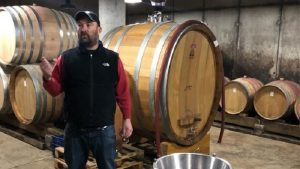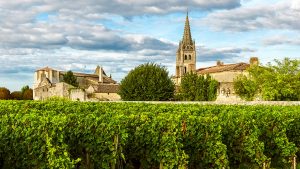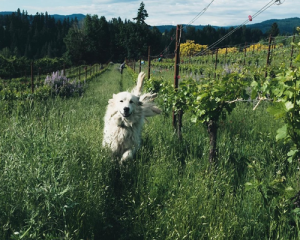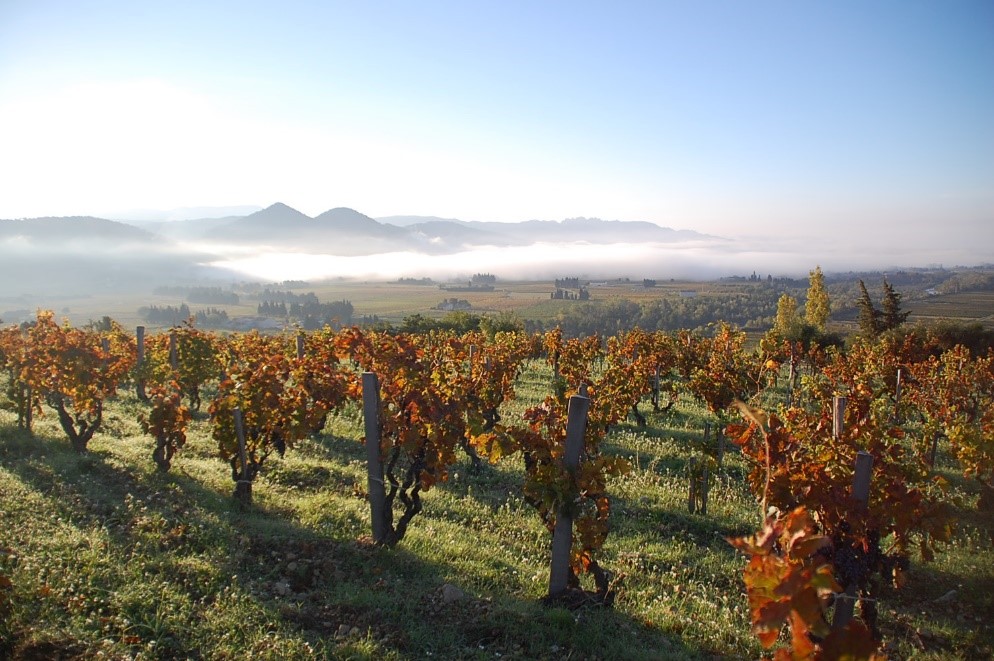
“I love cooking. I produce tasteful and voluptuous wines which should be paired with silky smooth dishes. I suggest serving my white wines with chicken in Morel mushroom sauce or a risotto with white truffles. You can pair my red wines with refined, elegant food, or a suave and tasty meat such as beef.” Listening to Jérôme Bressy speak about these wines and his love for cooking has something magical about it: even after a copious lunch, he knows how to tickle the taste buds. Have we whetted your appetite? Perfect! Let this winemaker tell his story…
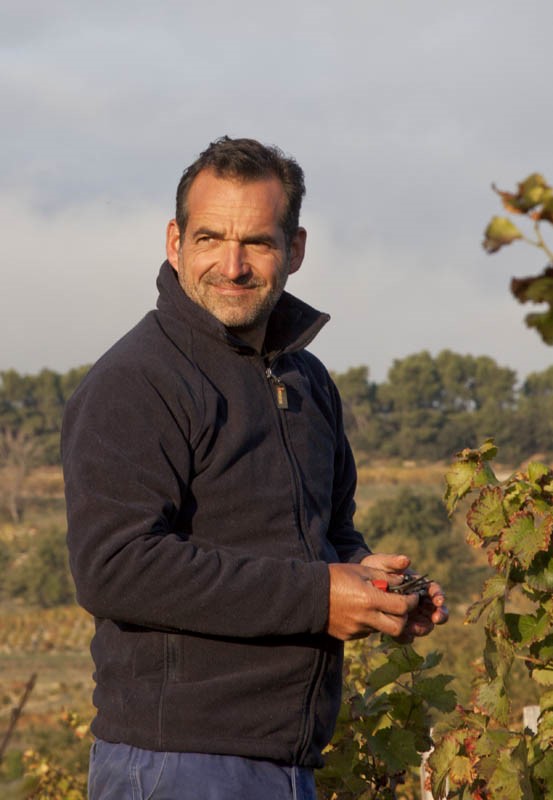 To the question “why did you want to remove your domain from the cooperative winery?”, the answer takes a novel-like turn. “I come from a family of winemakers who, like many others in the area, sold their grapes to the cooperative winery. When I was a child, I would follow my grandfather and father in the vines and I’d make wine with them. The profession of winemaker intrigued me as it’s the culmination of the work of a grapegrower.
To the question “why did you want to remove your domain from the cooperative winery?”, the answer takes a novel-like turn. “I come from a family of winemakers who, like many others in the area, sold their grapes to the cooperative winery. When I was a child, I would follow my grandfather and father in the vines and I’d make wine with them. The profession of winemaker intrigued me as it’s the culmination of the work of a grapegrower.
I therefore didn’t study very much and left school at 17 so that I could help my father and learn the traditional work of Châteauneuf-du-Pape producers. As the years went by, the desire to become winemaker didn’t diminish. Growing up, I discovered the world of fine wine. A world that could be more creative. That’s when I decided I would make a wine that was different. I wanted – and still want – to make a wine that is a pure expression of the earth. For that, I needed livings soils and so needed to convert to organic, before I was even 20 years old and when I still depended on the cooperative.
I discovered biodynamics in 1993. My first vintage was produced in 1996 in a small garage. After two years working in these conditions, I went to the bank in order to invest in a better vinification system.
Old Carignan, Counoise, Vaccarèse for the reds, Picardon, Clairette, Grenache for the whites are some of the many grapes you work with. Can you tell me about your desire to restore these old varieties?
I wanted to preserve the culture of the producers who came before me. I began in 1993 with Counoise, and since, every year I’ve done trials with complantation (planting several varieties in the same vineyard) because I like the richness and the nuances that result from this technique. How does it work? I taste the varieties and only select the best. It can be rather worrying because I have no guarantee of what the result will be… But it works! A synergy establishes between the plants over time. I hope that the person who inherits these vines will do something original with them.
Can you tell us about you viticultural methods?
I strive for very low yields thanks to hundred-year-old vines which produce very few grapes. This year, the vines were affected by mildew due to the spring rainfall. As I said, I always take risks in trying to find the perfect expression of the terroir. I thus taste my grapes but don’t pay too much attention to the analyses. If they taste good, I harvest.

And vinifications? What is your trademark?
I don’t stick to the same recipe. I go through different styles every 3 to 4 vintages. For instance, I used to destem my grapes, but now I work with whole bunches. Generally speaking, I don’t add any inputs or yeasts. I don’t add enzymes. I add Sulphur after malo, but only in very low doses to stabilize the wine. The élevages are long: two years for the white wines and three years for the reds. I keep them in the bottle for some time before selling so that they are already drinking well.
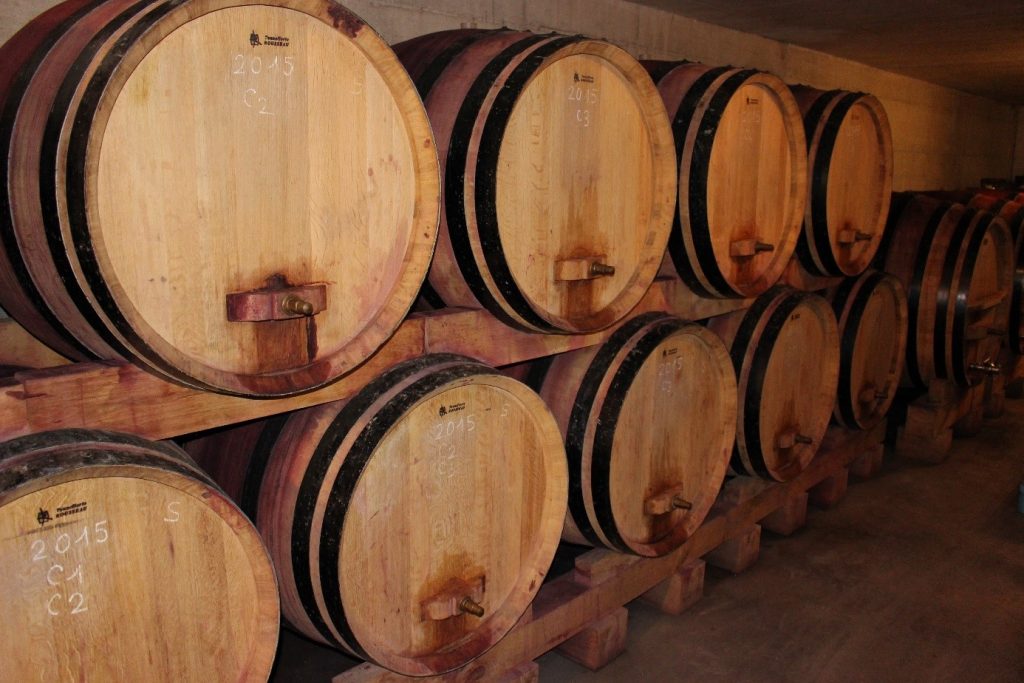
Your wines
My wines are made to be cellared for around 20 years and best reveal their wide range of aromas after 7 years. I suggest decanting young wines, and with the others it suffices to open them an hour before serving. Believe me, they will do the talking themselves, and above all will develop their expression beautifully over the course of a (good) meal.
The iDealwine team would like to thank Jérôme Bressy for this passionate, enriching and delicious insight into his wines.
Wines from Domaine Gourt de Mautens currently for sale
Rasteau
A stunning blend of forgotten grape varieties, this biodynamic wine was produced from soils of marl, clay and limestone. Whole bunches fermented naturally in tronconic vats before being raised in demi-muids, barrels and concrete vats. This allows the wine to express its vibrant, ripe fruit notes. Oak ageing lends some woody aromas and allows a micro-oxygenation which brings tertiary aromas (liquorice, smoke, leather). An exceptional, rare cuvée with good aging potential, made to be drank with savoury, generous dishes.

